- News
- Events
- Oneg Shabbat
- Collections
- Research
- Exhibitions
- Education
- Publishing Department
- Genealogy
- About the Institute
- Bookstore

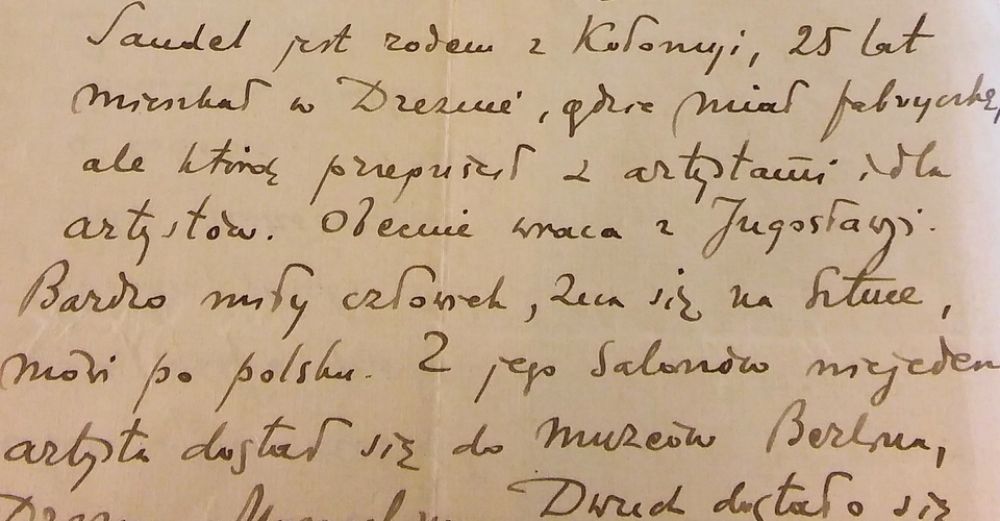
H. Łopaciński Library in Lublin
Manuscripts 2273, vol. 13, p. 187.
Vilnius, 6. 5. 36.
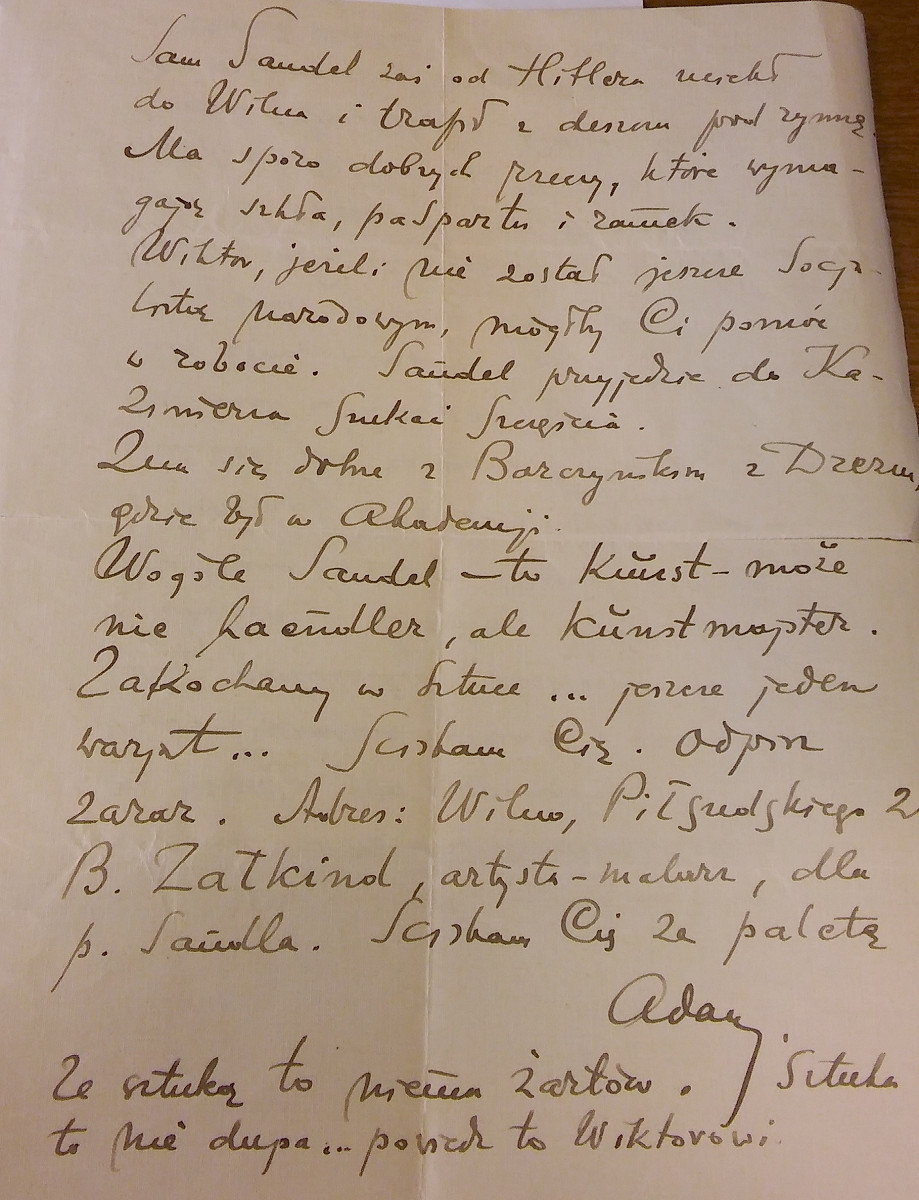
Dear Symche! [1] Would you be interested in organizing an exhibition for Mr Sandel, a collector from Vienna, at the Jewish Intelligentsia Club in Lublin? He is currently presenting his collection in Vilnius. The exhibition comprises more than 100 artworks, poorly framed, mostly drawings and watercolours by German Expressionists, there are Adler [2], Menkes [3], Buzin (Łódź) [4], Grossman (Łódź). Sandel
is a friend of Neuszul from Berlin and Dresden. [5] S Sandel is from Kolomyia, he has been living in Dresden for 25 years, where he was running a factory, but he lost all the money on artists and with them. He’s coming back from Yugoslavia now. He’s a very nice man, he knows a lot about art and speaks Polish. Thanks to him, quite a few artists have made it into the museums in Berlin, Dresden, Munich. Two others went to jail, third caught a venereal disease, and fourth one ended in a lunatic asylum. Sandel ran away from Hitler to Vilnius, out of the frying pan and into the fire. He’s got some good works which require glass, paspartu (sic!) and frames. Wiktor [6] if he’s not a national socialist yet, could help you with this work. Sandel is going to come to Kazimierz to search for luck. He got to know Barczyński [7] in Dresden, where he went to the Academy. Sandel, in general, may be not a Kunsthaendler, but a Kunstmeister. In love with art... one more lunatic... Best regards. Write soon. My address: Vilnius, 2 Piłsudskiego street, B. Załkind, painter, for Mr Sandel. I’m shaking your palette,
Adam.
Art is not a laughing matter. Art is not an arse... tell this to Wiktor.
This letter, written on 6 May 1936 by Adam Nowiński [8] and addressed to Symche Trachter (1894–1942), preserved at the Hieronim Łopaciński Library in Lublin (Manuscripts 2273, vol. 13, p. 187), contains interesting information about the founder of the JHI museum, Józef Sandel (1894–1962). this art dealer, collector and patron of artists, a dedicated communists, had spent many years in the Weimar Republic [9], and after World War II settled in Poland, where he created from scratch an art collection, today owned by the JHI.
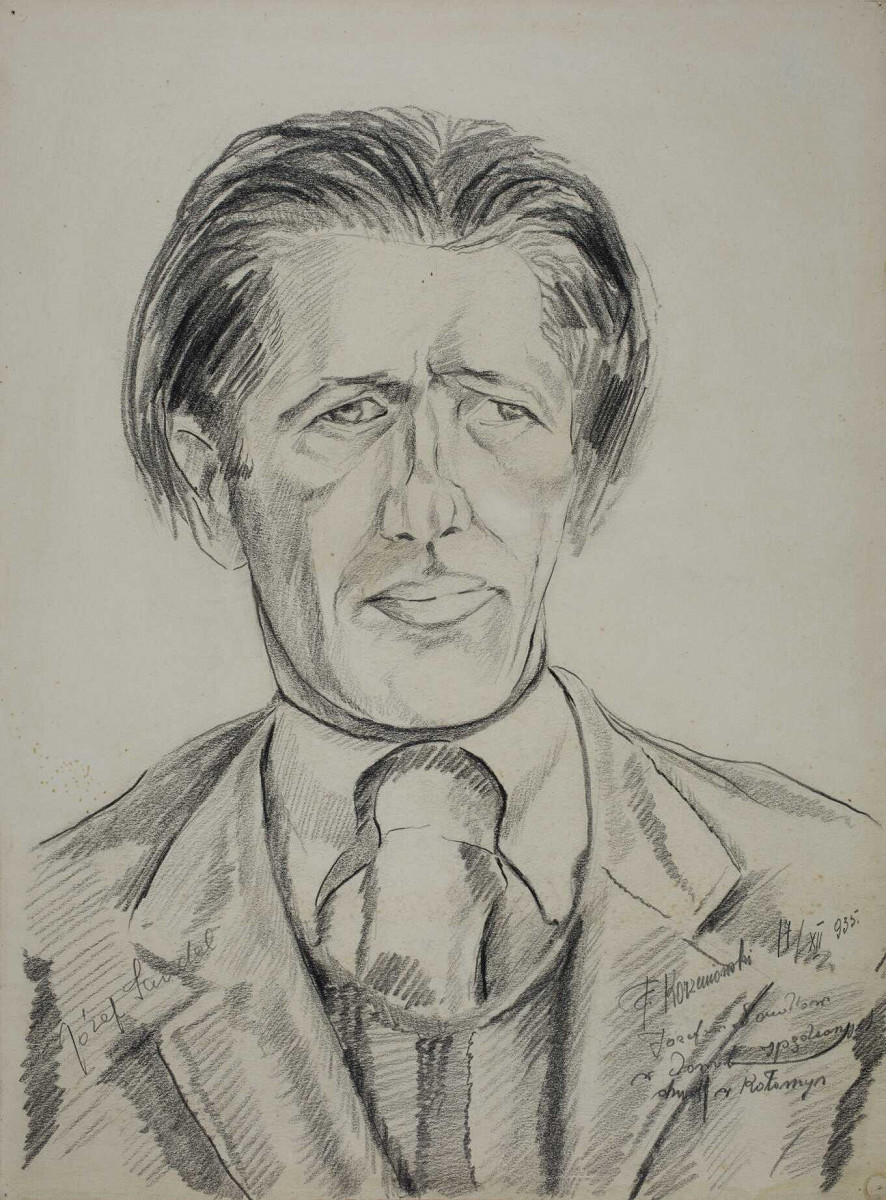
In 1935, he received a police order to leave Yugoslavia, where he had been staying and running an art gallery since 1933. He headed towards Poland and through his hometown of Kolomyia, he went to Vilnius [10]. Nowiński’s letter to Trachter regards the Vilnius period of Sandel’s life. Until now, we have known little more than the information gathered by Ernestyna Podhorizer-Sandel. Letter from the Lublin library is a valuable resource. Mrs Sandel wrote in 1973 in an essay commemorating her late husband that he was active in the Jewish art circles in Vilnius, where he organized a number of exhibitions, published articles about art in Jewish press, wrote reviews of exhibitions. He also wrote an introducing essay to catalogues of two exhibitions – by Róża Suckiewerówna and Ber Załkind [11]. He became friends with many local artists [12].
In Nowiński’s letter to Trachter, we also read that in May 1936, the exhibition of paintings, etchings and drawings from Sandel’s collection was still open (Ernestyna mentioned April). According to the letter, the exhibition was quite extensive, with over 100 artworks. We can verify the information. Ernestyna Podhorizer-Sandel mentions 96 artworks, along with the full title of the event: An exhibition of works by contemporary artists from Józef Sandel’s collection. She added that it was taking place at the Jewish Art Society in Vilnius. [13]
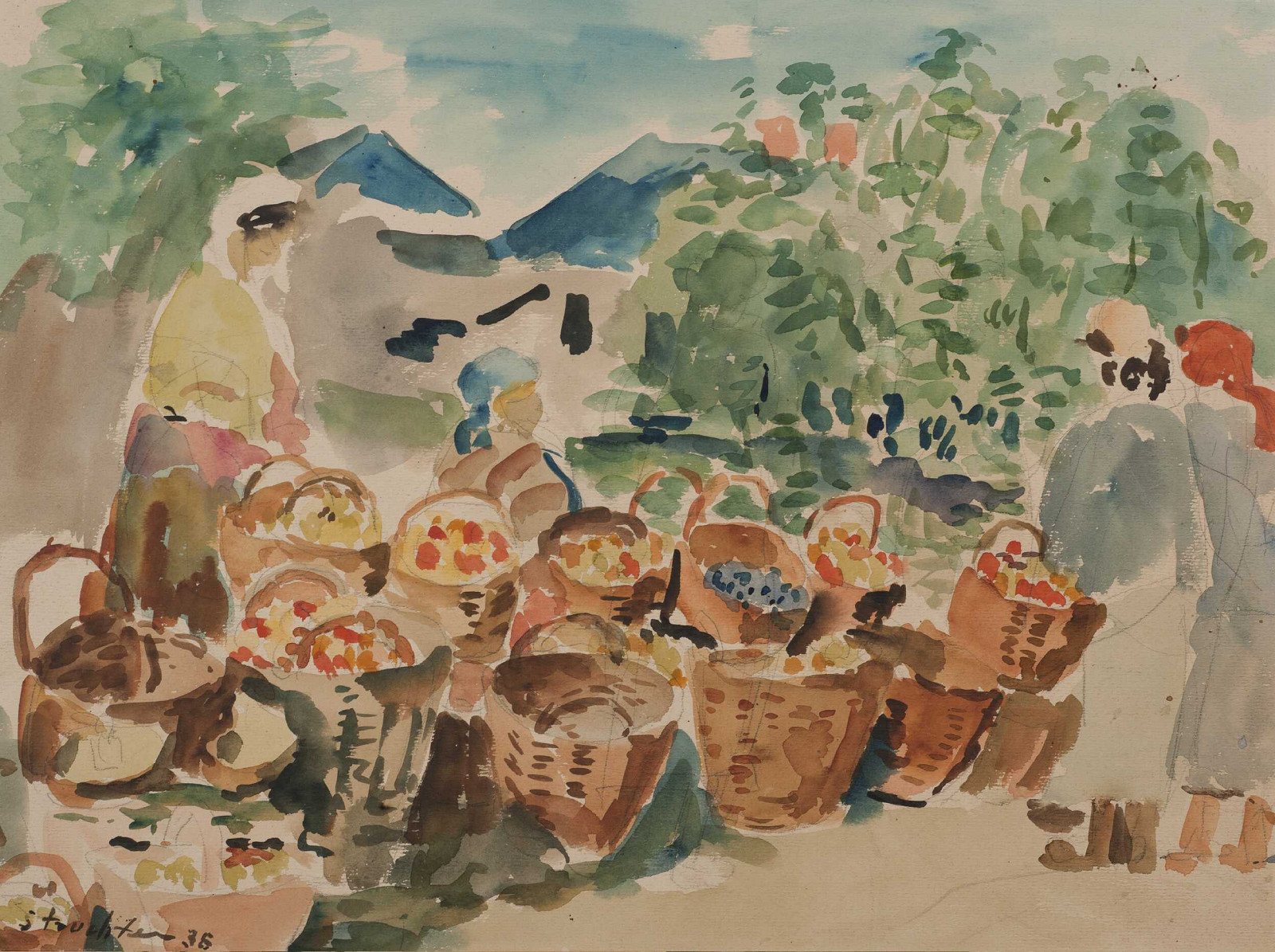
Nowiński proposes to Trachter that he undertake the organization of a similar (or made up of the same exhibits?) exhibition in Lublin. We do not know, unfortunately, what was the final of these negotiations.
The letter contains names of a few artists whose works had been presented at the Vilnius exhibition. We could assume that they were included in Sandel’s collection [14]. Until now, we didn’t know them. They complement our still humble knowledge about his preferences in art at the time.
Contrary to the postwar period, when Sandel dedicated himself to writing about art for good, which allows us for a reconstruction of his taste in arts (we can read that he appreciated realist, socially conscious art, steering clear from the avant-garde, which eventually led to his approval for socialist realism), we have few resources from the interwar period (for example, catalogues of his exhibitions were published in very small runs). We can only assume his views on art at that time. We know them mostly from second-hand accounts. We must rely on titles of exhibitions and works of the artists which he was promoting. Usually, they were left-leaning painters, but he wasn’t interested solely in this kind of art. in Belgrade, he organized an exhibition of Serbian religious art and another one in archeology [15].
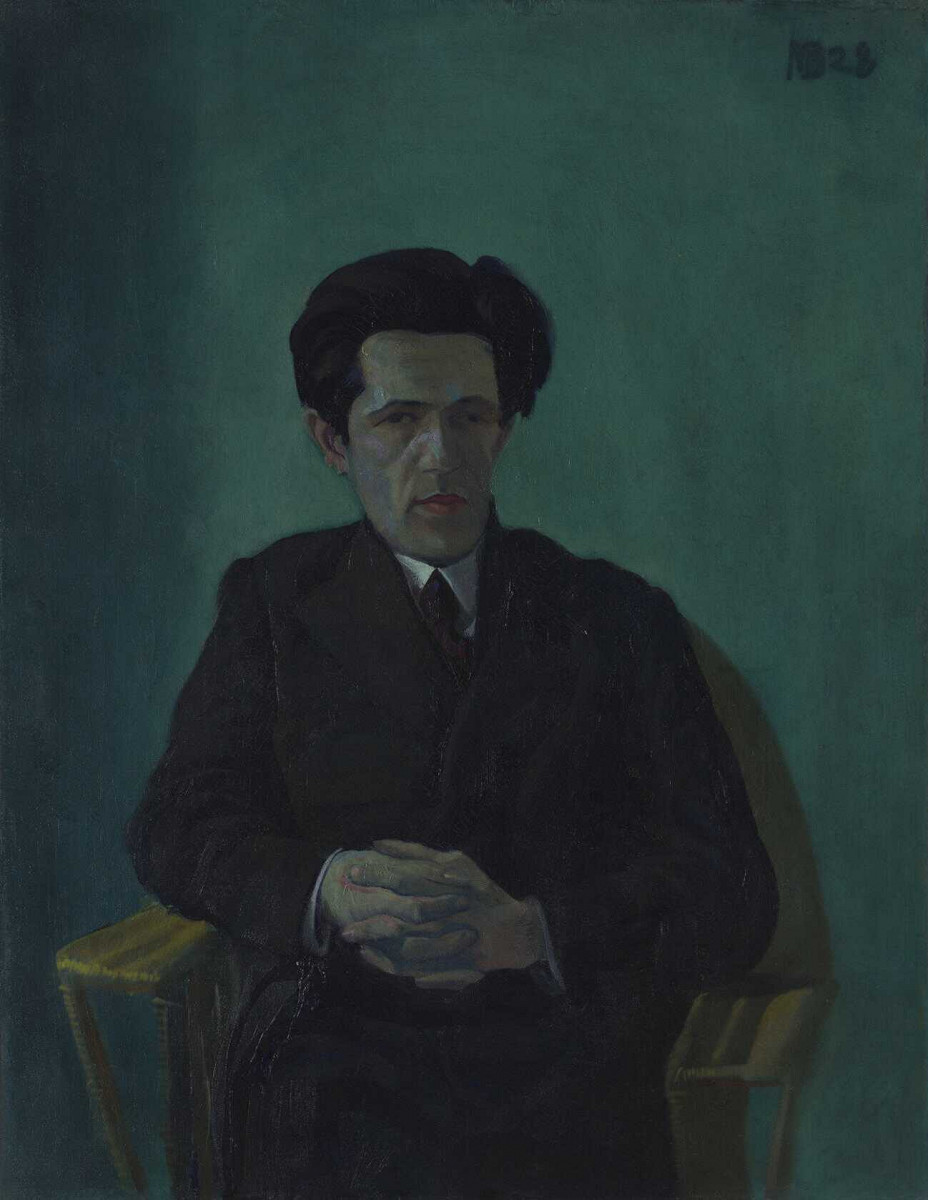
Thanks to the Lublin letter, we find out that his preference for socially engaged, realistic art had begun to shape already in the interwar period. Sandel was collecting paintings by German expressionists, whose works he presented in Vilnius. These works were often dealing with important social issues and were responding to his left-wing sensibility. His friendship with Ernst Neuschul (if it was certain), who represented the Neue Sachlichkeit movement, confirms the interest in realism, a style he praised in his postwar writings.
Sandel’s brief biography presented by Nowiński mostly matches our knowledge. Nowiński adds certain facts and exaggerates in several places (for example, Sandel had spent maximum 10 years in Dresden, not 25). [16] He emphasises Sandel’s involvement in support for artists, mostly left-wing ones, whose career he had helped; this is confirmed in other sources too. [17]
The letter is personal and friendly in tone, it even contains crude humour. It confirms that Trachter and Nowiński knew each other well. Unfortunately we don’t know if Trachter met Sandel. It is possible – both of them were frequently visiting Kazimierz Dolny as organizers or participants of art exhibitions. [18] Sandel opened his last exhibition in pre-war Poland in the summer of 1939. Simon Trachter’s works may have been presented there.
Footnotes:
[1] Symche (Simon) Trachter (1894–1942), a Lublin painter. He studiesd at the Academy of Arts in Kraków and at the Académie Ranson in Paris. After his return to Poland in 1929, he presented his works at the Institute of Art Propaganda in Warsaw, he participated in exhibitions organized by the Art Department of the Society
of Friends of Kazimierz at the Celejowska House (1932–1934), he died in Treblinka: Renata Piątkowska,
Ja jestem z Kazimierza, z miasteczka Kazimierz, gdzie malarze przesiadują…, [in:] W Kazimierzu Wisła mówiła do nich po żydowsku… Malarze żydowscy w kazimierskiej kolonii artystycznej, ed. Waldemar Odorowski, Kazimierz Dolny 2008, p. 230.
[2] Probably Jankiel Adler (1895–1949).
[3] Zygmunt Menkes (1896–1986).
[4] Maks Busyn (1899–1976). The JHI collection contains an oil portrait of Sandel by Busyn, painted in Dresden, 1928 (A-1434).
[5] Probably Ernst Neuschul (1895–1968): https://journals.library.wales/view/1272866/1277085/49#?xywh=130%2C246%2C1495%2C954 [access: 22 May 2019].
[6] Probably Wiktor Ziółkowski (1893–1978), Lublin painter, critic and bibliophile, who was friends with Trachter and collected his paintings. Trachter’s letters preserved in the Łopaciński library (aside from this one) were addressed to Ziółkowski.
[7] Barczyński (Barciński) Henryk (Henoch) (1896–1939), studied between 1919–1926 at the Dresden Academy, taught by Otto Gussman and Robert Sterl. Sandel had been studying since 1920 at another Dresden school,
Kunstgewerbeschule: Barczyński Henryk, Józef Sandel, Słownik Artystów Polskich i Obcych w Polsce Działających. Malarze, Rzeźbiarze, Graficy. vol. 1, Wrocław-Warszawa-Kraków-Gdańsk 1971, p. 90; E. Podhorizer-Sandel, Wspomnienie o Józefie Sandlu (w 10. rocznicę śmierci), Biuletyn Żydowskiego Instytutu Historycznego, 1973, no 1 (85), p. 113.
[8] A Lublin painter and poet, organizer of exhibitions in Płock and Kazimierz Dolny. He died in Auschwitz in 1941. Związek Artystów Plastyków. Wystawa prac malarskich i rysunków. Katalog wystawy, Sala parterowa Muzeum Lubelskiego w Lublinie Narutowicza 4, Październik 1944, Lublin 1944, p. 5.
[9] M. Sieramska, Sandel, Józef, Polski Słownik Biograficzny, vol. XXXIV, Wrocław-Warszawa-Kraków 1992–1993, p. 460–461.
[10] E. Podhorizer-Sandel, Wspomnienie o..., p. 115.
[11] Possibly Nowiński met Sandel thanks to Załkind, in whose house he was living in Vilnius. See: Nowiński’s address at the end of his letter to Trachter.
[12] Podhorizer-Sandel, Wspomnienie o..., p. 115.
[13] E. Podhorizer-Sandel, Wspomnienie o..., footnote. 10, p. 115.
[14] Z relacji Ernestyny Podhorizer-Sandel wynika, że Sandel w okresie drezdeńskim miał w swoich zbiorach obrazy malarzy niemieckich. Część tej kolekcji (”kilkadziesiąt celniejszych obrazów”) udało mu się wywieźć z Niemiec po dojściu Hitlera do władzy w 1933 r. Trafiła ona wraz z Sandlem do Belgradu, a następnie do Polski: E. Podhorizer-Sandel, Wspomnienie o..., s. 115.
[15] E. Podhorizer-Sandel, Wspomnienie o..., s. 115.
[16] Por. M. Getka Kenig, J. Bendkowski, Art History and the Fight for Memory. Józef Sandel (1894–1962), Warszawa 2016, s. 18–19.
[17] Przykładem malarki, która taką pomoc otrzymała i sama o niej wspominała może być Lea Grundig: zob. E. Podhorizer-Sandel, Wspomnienie o..., s. 114.
[18] Renata Piątkowska, Ja jestem z Kazimierza..., s. 230; M. Sieramska, Sandel, Józef..., s. 460.